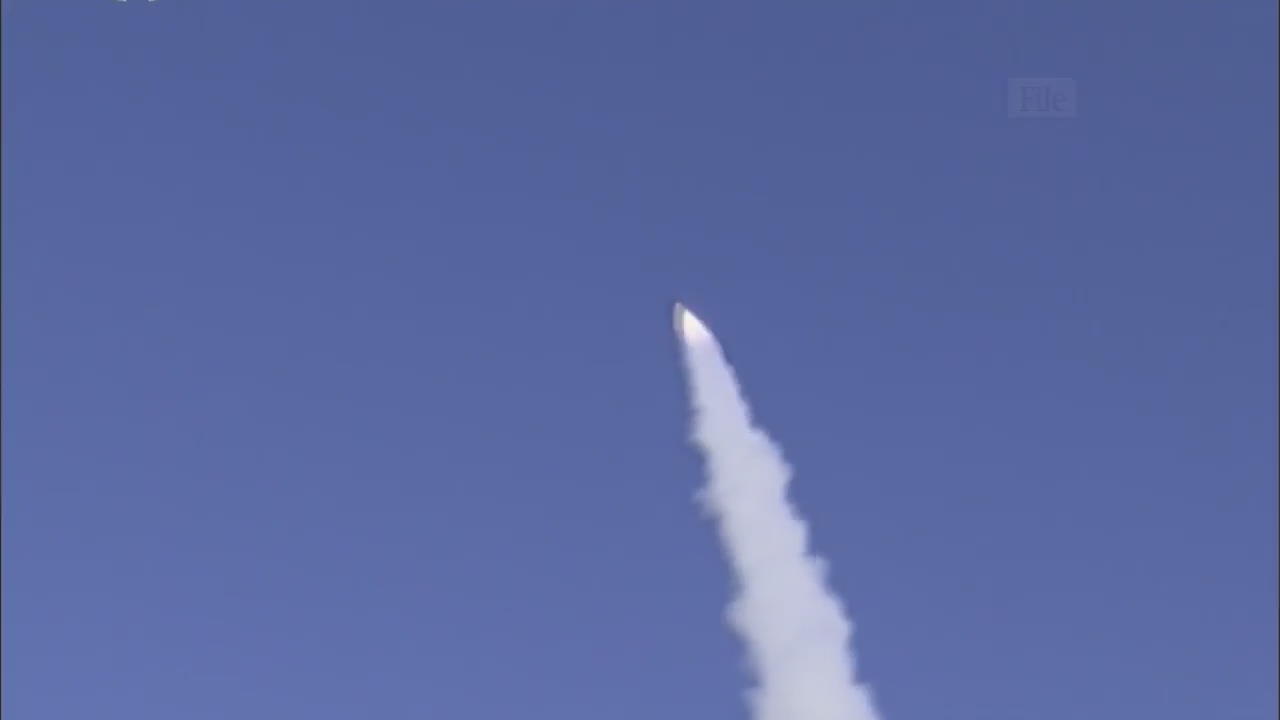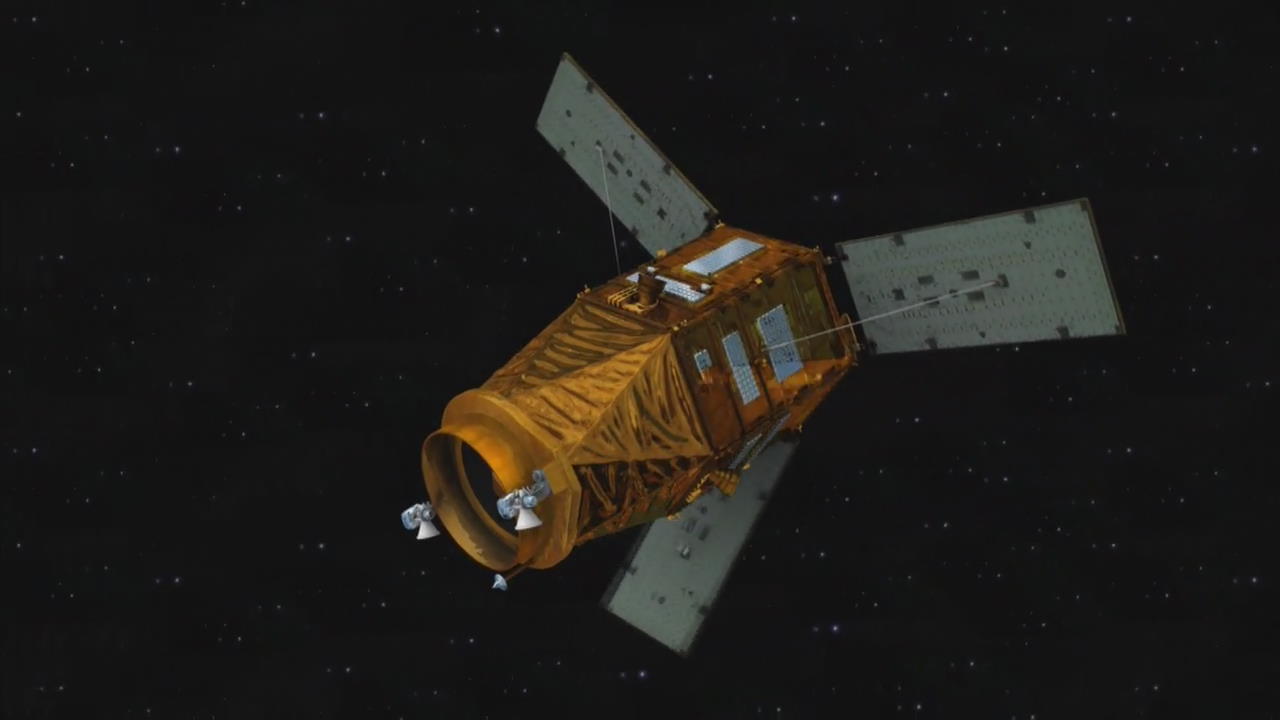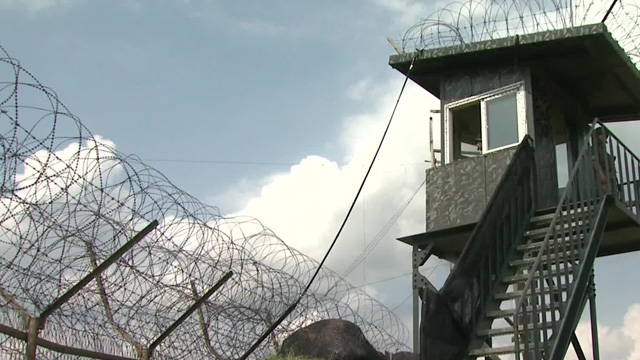NK Missile Launch
입력 2017.08.28 (13:58)
수정 2017.08.28 (14:19)
읽어주기 기능은 크롬기반의
브라우저에서만 사용하실 수 있습니다.
[Anchor Lead]
North Korea fired three short-range projectiles into the East Sea on August 26. But South Korea and the United States seem to have differing views on what kind of projectiles they were. South Korea presumes them to have come from 300mm multiple rocket launchers, whereas the U.S. says they were short-range ballistic missiles. Here’s more.
[Pkg]
Two of the three projectiles that were fired by Pyongyang recently flew 250 kilometers. Both projectiles have been found to have flown at an altitude of around 50 kilometers. Although their altitude was similar to that of 300mm multiple rocket launchers that the North developed last year, their firing range turned out to be 50 kilometers longer than the 200km range of the multiple rocket launchers. This has led experts to believe that the projectiles could be a new version of the 300mm multiple rocket launchers.
[Soundbite] Shin Jong-woo (Korea Defense & Security Forum) : "Multiple rocket launchers attack their targets by firing multiple rockets simultaneously. Recently the North has been developing rocket launchers with larger diameters, higher precision and longer firing range."
However, the U.S. Pacific Command believes that the projectiles were short-range ballistic missiles. It announced so even in its revised statement. Such a difference in opinion is quite unprecedented for South Korea and the U.S., which so far have always shared information on North Korean missiles and analyzed them together before finetuning and announcing joint statements. Given the fact that one of the three projectiles exploded shortly after the launch, there is a possibility that Pyongyang tested a new missile. Observers also say that judging by the silence in the North Korean media, which usually makes sure to announce the test-firing of major weapons, the latest launch failed with some of the projectiles exploding before reaching the target.
North Korea fired three short-range projectiles into the East Sea on August 26. But South Korea and the United States seem to have differing views on what kind of projectiles they were. South Korea presumes them to have come from 300mm multiple rocket launchers, whereas the U.S. says they were short-range ballistic missiles. Here’s more.
[Pkg]
Two of the three projectiles that were fired by Pyongyang recently flew 250 kilometers. Both projectiles have been found to have flown at an altitude of around 50 kilometers. Although their altitude was similar to that of 300mm multiple rocket launchers that the North developed last year, their firing range turned out to be 50 kilometers longer than the 200km range of the multiple rocket launchers. This has led experts to believe that the projectiles could be a new version of the 300mm multiple rocket launchers.
[Soundbite] Shin Jong-woo (Korea Defense & Security Forum) : "Multiple rocket launchers attack their targets by firing multiple rockets simultaneously. Recently the North has been developing rocket launchers with larger diameters, higher precision and longer firing range."
However, the U.S. Pacific Command believes that the projectiles were short-range ballistic missiles. It announced so even in its revised statement. Such a difference in opinion is quite unprecedented for South Korea and the U.S., which so far have always shared information on North Korean missiles and analyzed them together before finetuning and announcing joint statements. Given the fact that one of the three projectiles exploded shortly after the launch, there is a possibility that Pyongyang tested a new missile. Observers also say that judging by the silence in the North Korean media, which usually makes sure to announce the test-firing of major weapons, the latest launch failed with some of the projectiles exploding before reaching the target.
■ 제보하기
▷ 카카오톡 : 'KBS제보' 검색, 채널 추가
▷ 전화 : 02-781-1234, 4444
▷ 이메일 : kbs1234@kbs.co.kr
▷ 유튜브, 네이버, 카카오에서도 KBS뉴스를 구독해주세요!
- NK Missile Launch
-
- 입력 2017-08-28 14:02:08
- 수정2017-08-28 14:19:33

[Anchor Lead]
North Korea fired three short-range projectiles into the East Sea on August 26. But South Korea and the United States seem to have differing views on what kind of projectiles they were. South Korea presumes them to have come from 300mm multiple rocket launchers, whereas the U.S. says they were short-range ballistic missiles. Here’s more.
[Pkg]
Two of the three projectiles that were fired by Pyongyang recently flew 250 kilometers. Both projectiles have been found to have flown at an altitude of around 50 kilometers. Although their altitude was similar to that of 300mm multiple rocket launchers that the North developed last year, their firing range turned out to be 50 kilometers longer than the 200km range of the multiple rocket launchers. This has led experts to believe that the projectiles could be a new version of the 300mm multiple rocket launchers.
[Soundbite] Shin Jong-woo (Korea Defense & Security Forum) : "Multiple rocket launchers attack their targets by firing multiple rockets simultaneously. Recently the North has been developing rocket launchers with larger diameters, higher precision and longer firing range."
However, the U.S. Pacific Command believes that the projectiles were short-range ballistic missiles. It announced so even in its revised statement. Such a difference in opinion is quite unprecedented for South Korea and the U.S., which so far have always shared information on North Korean missiles and analyzed them together before finetuning and announcing joint statements. Given the fact that one of the three projectiles exploded shortly after the launch, there is a possibility that Pyongyang tested a new missile. Observers also say that judging by the silence in the North Korean media, which usually makes sure to announce the test-firing of major weapons, the latest launch failed with some of the projectiles exploding before reaching the target.
North Korea fired three short-range projectiles into the East Sea on August 26. But South Korea and the United States seem to have differing views on what kind of projectiles they were. South Korea presumes them to have come from 300mm multiple rocket launchers, whereas the U.S. says they were short-range ballistic missiles. Here’s more.
[Pkg]
Two of the three projectiles that were fired by Pyongyang recently flew 250 kilometers. Both projectiles have been found to have flown at an altitude of around 50 kilometers. Although their altitude was similar to that of 300mm multiple rocket launchers that the North developed last year, their firing range turned out to be 50 kilometers longer than the 200km range of the multiple rocket launchers. This has led experts to believe that the projectiles could be a new version of the 300mm multiple rocket launchers.
[Soundbite] Shin Jong-woo (Korea Defense & Security Forum) : "Multiple rocket launchers attack their targets by firing multiple rockets simultaneously. Recently the North has been developing rocket launchers with larger diameters, higher precision and longer firing range."
However, the U.S. Pacific Command believes that the projectiles were short-range ballistic missiles. It announced so even in its revised statement. Such a difference in opinion is quite unprecedented for South Korea and the U.S., which so far have always shared information on North Korean missiles and analyzed them together before finetuning and announcing joint statements. Given the fact that one of the three projectiles exploded shortly after the launch, there is a possibility that Pyongyang tested a new missile. Observers also say that judging by the silence in the North Korean media, which usually makes sure to announce the test-firing of major weapons, the latest launch failed with some of the projectiles exploding before reaching the target.
이 기사가 좋으셨다면
-
좋아요
0
-
응원해요
0
-
후속 원해요
0










![[headline]](https://news.kbs.co.kr/data/news/2017/08/28/3540768_10.jpg)






이 기사에 대한 의견을 남겨주세요.